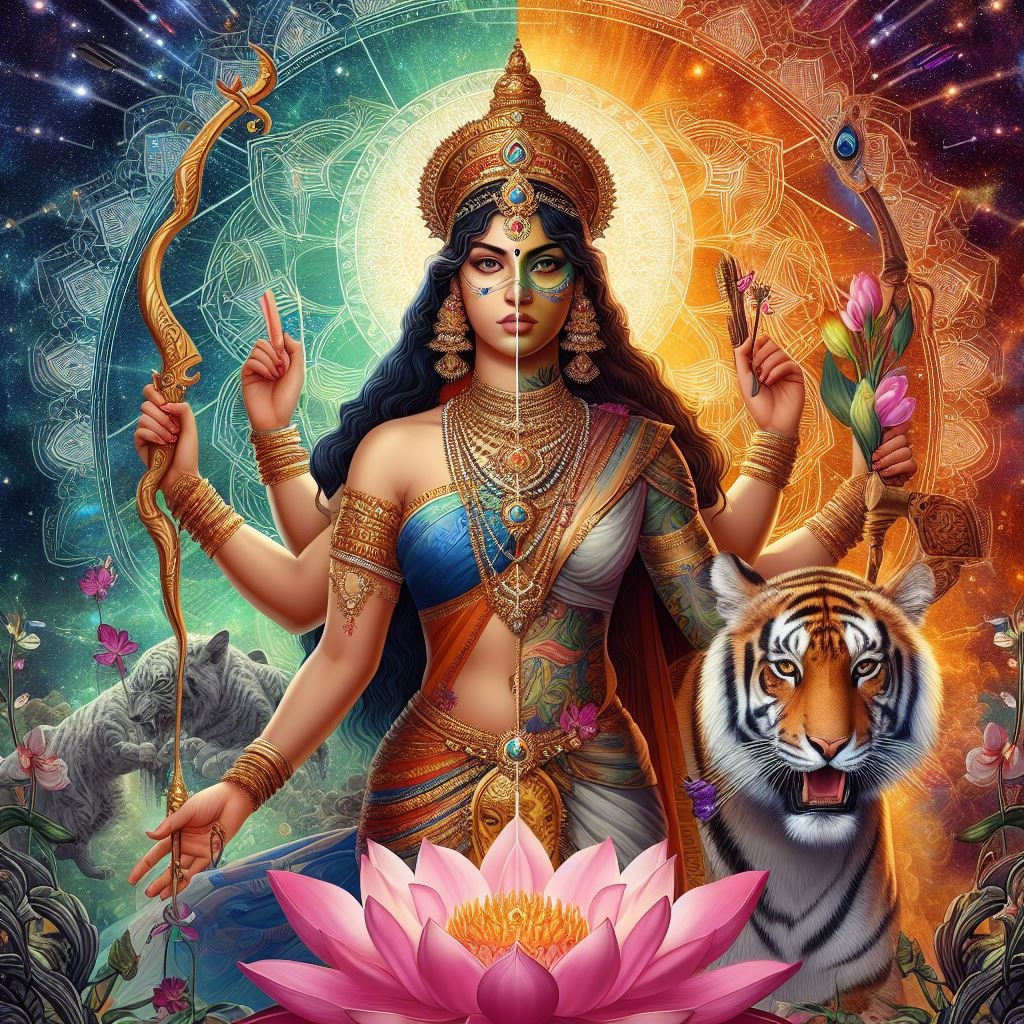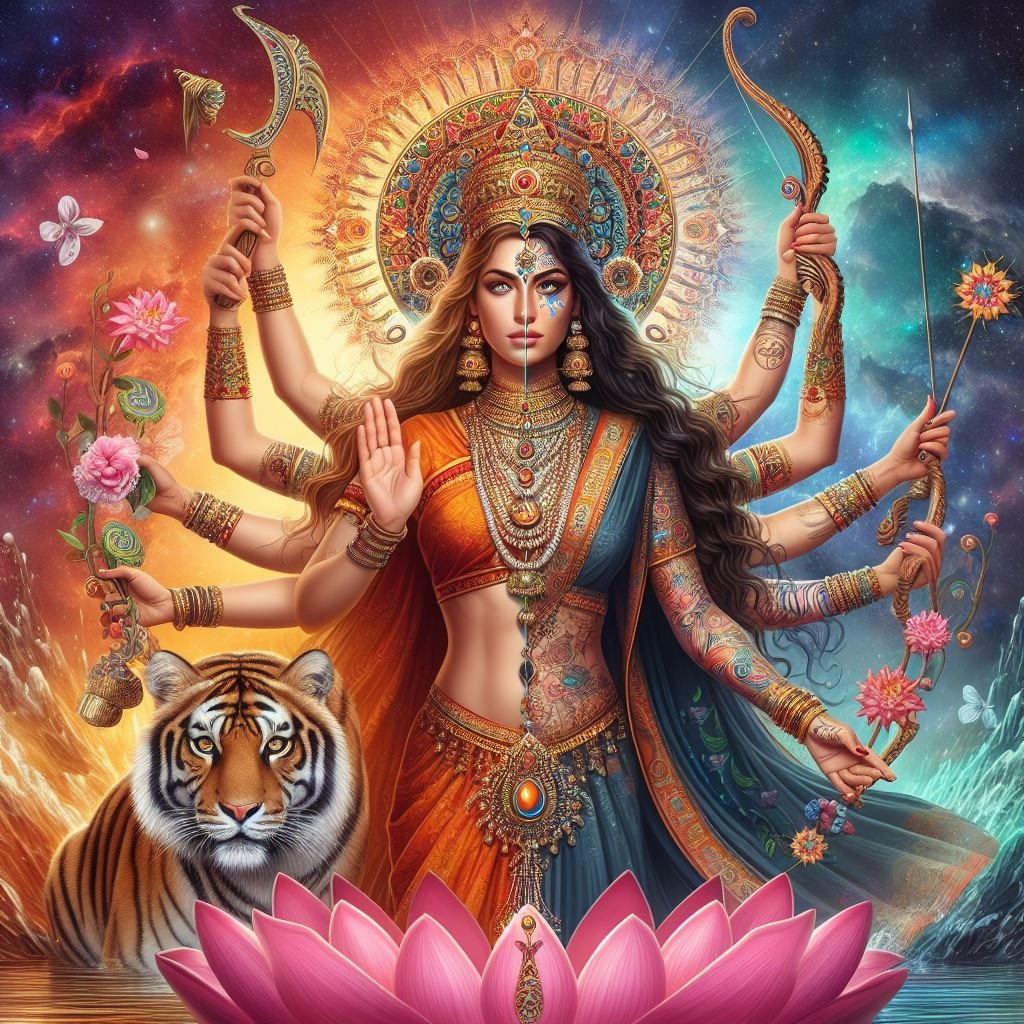Women in ancient Hindu scriptures to contemporary practices, have played dynamic roles, personifying strength, wisdom, and devotion. Hinduism defies stereotypes, offering a nuanced perspective on the feminine, where goddesses emerge as powerful symbols of creation, transformation, and strength. Contrary to limiting portrayals, the religion recognizes women as multifaceted beings with the capacity to embody diverse qualities.
Goddesses within Hinduism serve as archetypes, each representing specific attributes. Saraswati symbolizes wisdom, Lakshmi embodies prosperity, and Durga manifests as a symbol of fierce protection. This diversity challenges simplistic views of women and underscores their versatile and powerful nature.
The recognition of goddesses as symbols of power and creators highlights a departure from traditional stereotypes, presenting women as active contributors rather than passive entities. This nuanced perspective, deeply rooted in ancient scriptures, transcends into modern practices, fostering a more inclusive understanding of the feminine within Hindu culture. In essence, Hinduism celebrates the dynamic and evolving roles of women, portraying them as agents of strength, wisdom, and transformation throughout the tapestry of its spiritual and cultural history.
Goddesses as Archetypes:
Hinduism, with its rich tapestry of divinity, venerates a myriad of goddesses, each embodying distinct facets of existence. Saraswati, revered as the goddess of wisdom, symbolizes the intellectual and creative aspects of women. She is portrayed with a veena (musical instrument), representing the harmony of knowledge and arts. Lakshmi, the goddess of prosperity, signifies the material and financial well-being, embodying the virtues of abundance and wealth. Durga, a formidable deity, manifests as the fierce protector, symbolizing strength and fearlessness in the face of adversity.
These goddesses collectively demonstrate the multifaceted roles that women can embody within the Hindu pantheon. Saraswati’s association with wisdom challenges stereotypes by emphasizing intellectual prowess, while Lakshmi’s embodiment of prosperity goes beyond material wealth to encompass abundance in various aspects of life. Durga, in her fierceness, represents the protective and assertive nature that women can exhibit.
The portrayal of these goddesses dispels outdated notions of female passivity, offering a profound counter-narrative. Instead of being confined to predefined roles, Hindu goddesses showcase the expansive and dynamic capacities inherent in women. They serve as inspirational archetypes, encouraging women to embrace and express the diverse roles they can play in society, transcending stereotypes and fostering a more inclusive understanding of femininity within the fabric of Hindu spirituality.
Historical and Mythological Narratives:
In the vast tapestry of Hindu mythology, women emerge as central figures, weaving compelling narratives and influencing destinies. Sita, exemplifying unwavering devotion in the Ramayana, Draupadi’s resilience in the Mahabharata, and Parvati’s strength in various legends collectively underscore the richness of female characters. These iconic women transcend traditional roles, embodying agency and leaving an indelible impact on the mythological landscape.
Sita’s unwavering commitment to righteousness and loyalty, despite facing adversities, showcases the depth of female character in Hindu narratives. Draupadi, resilient in the face of challenges, symbolizes assertiveness and empowerment. Parvati, through her strength and determination, becomes a symbol of divine feminine power.
These stories not only highlight the agency and strength of these female characters but also challenge stereotypes and contribute to a more nuanced understanding of women’s roles.


Rituals and Celebrations:
In Hindu households, women play active and integral roles in various rituals and celebrations, contributing to the rich tapestry of religious and cultural practices. From leading prayers to assuming key responsibilities in festivals, their involvement is not only encouraged but also considered essential. Karva Chauth, Navaratri, and Teej stand out as prime examples where the devotion of women and the strength of familial bonds take center stage.
Karva Chauth, a significant fasting ritual observed by married women, exemplifies the depth of their devotion to their spouses. Navaratri, a vibrant festival celebrated over nine nights, sees women actively participating in traditional dances like Garba, fostering a sense of community and joy. Teej, dedicated to the goddess Parvati, symbolizes the strong bond between husband and wife, with women undertaking fasting and rituals for the well-being of their marital relationships.
These celebrations not only showcase the active participation of women but also highlight the significance of their roles in preserving traditions and fostering familial connections.
Social Impact:
Hindu women have played pivotal roles in driving societal progress and ushering in transformative changes. Notable figures such as Savitribai Phule, a trailblazer in the 19th century, pioneered women’s education, challenging societal norms to empower women through learning. Her contributions laid a foundation for the educational upliftment of women in India. Anandibai Gopalrao Joshi, among the earliest Indian female physicians, broke gender barriers to pursue a career in medicine, inspiring subsequent generations of women in the field. These exemplary Hindu women symbolize the resilience and determination that have fueled progressive movements. Their pioneering efforts have not only empowered women but have also contributed significantly to reshaping societal attitudes and fostering positive change within the broader community.
Contemporary Challenges:
Despite strides in empowerment, Hindu women grapple with persistent challenges, including gender-based violence, discrimination, and unequal educational access. These hurdles, though prevalent, underscore the ongoing need for societal transformation. Addressing these issues is paramount to create a more inclusive and equitable society. Initiatives that promote education, challenge discriminatory practices, and advocate for women’s rights are crucial steps toward dismantling these barriers and ensuring that Hindu women can fully participate in all aspects of social, economic, and cultural life.
In the vast expanse of Hinduism, women’s roles are not confined to the periphery but are integral to the religion’s essence. By embracing the diversity and strength inherent in the feminine, Hinduism reflects a dynamic and evolving understanding of gender roles. As we delve deeper into this spiritual journey, it becomes evident that Hinduism’s portrayal of women is not static but a reflection of the ongoing evolution of societal values.



